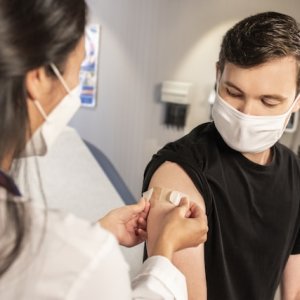Genetics for Customized Health Solutions

STORY INLINE POST
Q: In 2017, you said your priorities were to promote preventive care and to make doctors available in the workplace. How has this played out?
A: PEMEX continues to emphasize prevention as one of its core priorities, but we have taken a different approach to our idea of having doctors in every workplace. PEMEX wants to boost health from a productivity perspective, which means that we will measure health by the impact it has on the company’s performance. PEMEX has 1.5 beds per thousand people while the average at other health facilities is 1.9 beds. However, PEMEX does not have a shortage of beds as our hospitals have a 65 percent occupied capacity. This means our affiliates are not hospitalized as often as the average population thanks to our focus on preventive medicine and productivity. PEMEX does not want to build more facilities, it wants healthier people.
Q: What are the advantages and limitations of PEMEX’s new approach to health?
A: The PEMEX Health Unit is measured differently than other systems, such as IMSS and ISSSTE. Health services are based on financial indicators but this does not mean that PEMEX seeks to reduce its cost per capita related to health. The indicators are designed to measure how the cost per capita is invested and the effect it has on labor productivity; therefore, each financial study carried out promotes the most profitable opportunities, which helps PEMEX to save in the medium and long-terms. The PEMEX population is genetically related because when oil was nationalized in 1938 the oil zones were almost uninhabited and without infrastructure. PEMEX invested in the generation of communities with schools, hospitals and other services. As a result, the company has an inbreeding gene that makes its population susceptible to certain diseases, like the prevalence of diabetes, which at 17 percent is twice the national rate.
Q: Mexico is going through an epidemiological change. How has PEMEX prepared its health services for this change?
A: It can be said that PEMEX is a mirror of the Mexico of the future because 26 percent of its population is over 65 years old. However, the company’s life expectancy is 84.5, higher than the Mexican average. Also, the Health Unit registers greater average diabetic control by having around 33 percent of our patients at lower biological parameters. We have achieved standards similar to those in Europe with a strategy based on results and the consolidated purchase of medicines. Our clinical practices comply with CENETEC regulations and we invest heavily in the training of our health workers, with approximately three courses per year. PEMEX’s objective is to generate a complete ecosystem that promotes an integral health model.
Q: PEMEX handles a significant and reliable amount of health data. How is this used to contribute to the health sector?
A: The PEMEX magazine Medical Journal is available to the public online. Within the health unit, we carry out two daily video conferences with all our members to discuss the topics included in the magazine. We want our magazine to be known across the health industry. In addition, we want to share our health approach with the industry by providing a message that touts strategic investment and prevention models. All our actions are oriented to investing in the management and control of diseases so that our employees can enjoy a good quality of life and maintain their productivity.
Q: ACROM and INMEGEN will conduct clinical studies and research with PEMEX. What is the project’s goal?
A: PEMEX’s working population is characterized by endogamic genes and this information is stored in our Electronic Medical Records (EMRs) database. From that database, we have selected around 500 patients from all over the country who we will study to map the genetic profile of our oil workers. PEMEX expects to include another 500 people in the study by the end of the year. As a result of this study, we hope to purchase precision drugs to better manage diseases such as diabetes and hypertension.






















